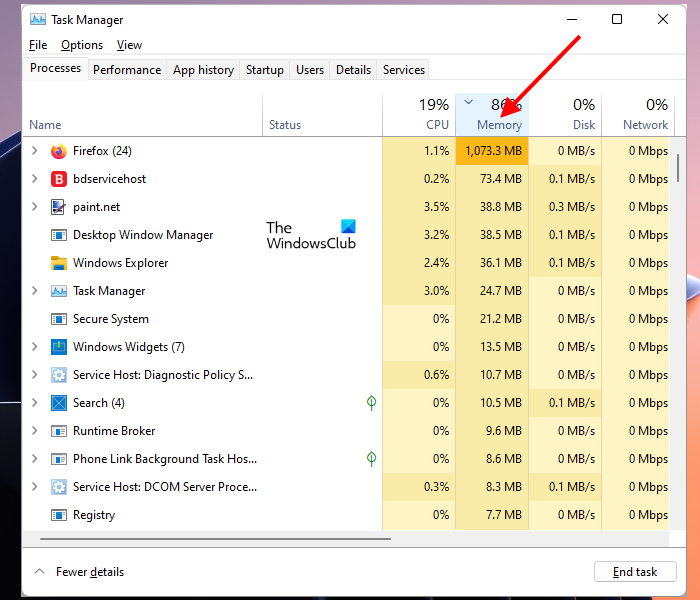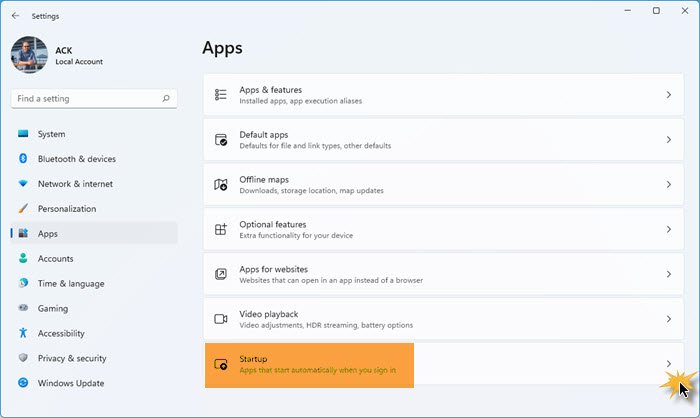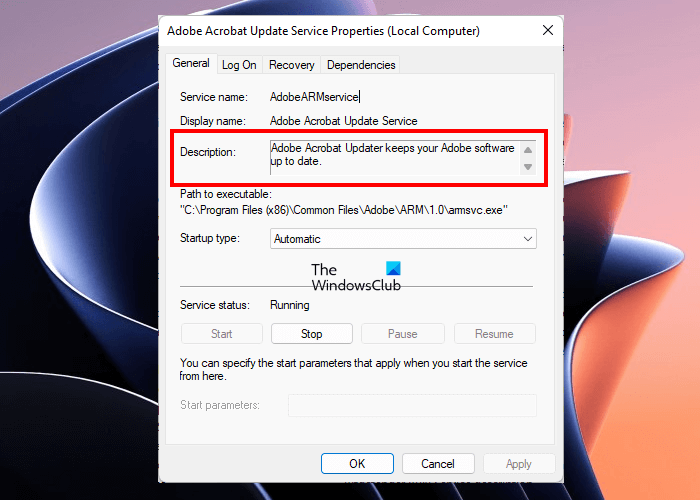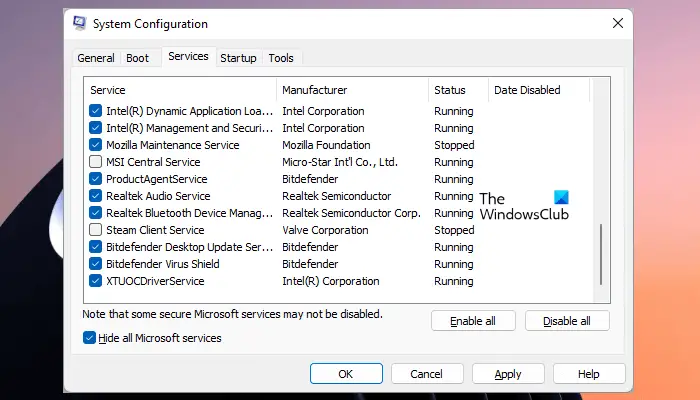Do you see too many Background Processes in Windows 11? This article will discuss how to manage and stop too many unnecessary background processes in Windows 11/10.

When you start your computer, Windows loads all device drivers, services, and startup apps. These services include both Microsoft and third-party services. All these startup apps and services run in the background. Microsoft services are necessary for the proper functioning of your system. Hence, they are an essential part of your system. But the third-party services are not an essential part of your system. Therefore, you can enable or disable them as per your requirements. All these services and startup apps use some of your system resources. These services are also called background processes. Too many background processes consume high system resources. Due to this, you can experience performance issues on your system.
How to stop Background Processes in Windows 11/10
You can manage too many background processes in Windows 11/10 in any of the following ways. But before you proceed, let’s see how to view the background processes and the startup apps in Windows 11/10.
To view the background processes and startup apps, follow the steps explained below:

- Press the Win + R keys to launch the Run command box and type taskmgr. Click OK. This will launch the Task Manager. Alternatively, you can also use the Ctrl + Shift + Esc shortcut for the same.
- Select the Processes tab and scroll down to view all the third-party background and Windows processes.
- Click on the Startup tab to view which startup apps are enabled and disabled on your system.
How to stop unnecessary background processes in Windows 11
Let’s see the ways to manage too many background processes in Windows 11/10.
- Kill background processes using the Task Manager
- Disable the startup apps
- Use the Services Management app to disable unwanted background services
- Use MSConfig to disable third-party services
Too many Background Processes in Windows 11
1] Kill background processes using the Task Manager
The first method is to kill the unnecessary background services and apps using the Task Manager. This action will also free up your computer’s RAM. The following steps will guide you on terminating a background service using the Task Manager. But before you proceed, make sure that the service that you are going to terminate is not the Windows Service, as terminating the Windows services will make your system unstable and you may experience errors.
- Open the Task Manager.
- Select the Processes tab.
- Right-click on the background service that you want to terminate and select End task.
The above steps will terminate the selected background process. Terminate only the third-party services. For example, Adobe Acrobat Update Service is obviously not a Microsoft Service. Therefore, you can terminate it. You will see this service in the Task Manager if you have installed Adobe Acrobat Reader on your system.

You can also check which third-party services are consuming more system resources. Let’s say, you want to check which third-party apps or services are using high memory, open the Task Manager, and click on the Memory. This will sort all the apps and services in decreasing order as per the memory consumption.
Read: How to force close a Program which Task Manager cannot terminate
2] Disable the startup apps
Startup apps are the apps that start automatically on system startup. These programs run in the background and consume your system resources. If these apps are not important to launch every time you start your system, you can disable them to save your system resources. The task Manager lets you manage startup apps. The following steps will help you with that:
- Open the Task Manager.
- Navigate to the Startup tab. You will see all the startup apps there.
- Right-click on the startup app that you want to disable and select disable.

You can thus manage the startup apps in Windows Settings. You can manage the startup programs using the Task Manager, WMIC, MSCONFIG, GPEDIT or Task Scheduler .
The above steps will disable the startup apps and prevent them from starting automatically the next time you start your system.
Read:
- How to find out what startup programs I can disable safely in Windows
- Get notified when a program adds itself to the Startup list in Windows 11
3] Use the Services Management app to disable background services
The Services Manager lets you manage all Microsoft and third-party services. When you open this app, you will see a list of all the services (running and stopped). You can start the stopped services and vice-versa. If a third-party service is consuming more system resources, you can prevent it from running in the background the next time you start your system by using the Services Management app.

If you do not know what a particular Service does on your system, you can read its description by opening its Properties. The description of the service may let you know whether it is an important part of your system or not. For example, in the above screenshot, you can read the description of the Adobe Acrobat Update Service. It is clearly mentioned that this service keeps Adobe Acrobat Reader up to date. Therefore, disabling this service will not affect the functioning of your system. Instead, it will stop the automatic updates for Adobe Acrobat Reader.
Disable only the third-party services that you do not need. Do not disable any Microsoft Services. If you are unsure about a particular service, it will be better to NOT DISABLE it but instead to set it to MANUAL – or leave it as is.
Read: What does Automatic (Trigger Start) and Manual (Trigger Start) mean for Windows Services?
The following steps will help you disable third-party background services using the Services Management app:
- Open the Run command box (Ctrl + R) and type services.msc. Click OK. This will open the Services Management app.
- Now, right-click on the service that you want to disable and select Properties.
- Select Disabled in the Startup type drop-down.
- Click Apply and then click OK.
After performing the above steps, when you start your system from the next time, those particular services will not get started automatically.
Read: Which Windows Services can you safely disable?
4] Use MSConfig to disable third-party services
MSConfig or System Configuration is a utility that helps users troubleshoot Windows startup issues. You can also use MSConfig to manage startup services. The above methods help you manage startup apps and background services. But you can only use these methods when you know which are the Microsoft services and which are the third-party services. MSConfig has an option using which you can hide all Microsoft services. By doing so, you can easily identify and disable all third-party services with a click of your mouse.

The following instructions will guide you on how to use MSConfig to disable third-party services.
- Open the Run command box and type msconfig. Click OK. This will launch the System Configuration utility.
- Select the Services tab.
- By default, it shows all the Microsoft and third-party services. To view only third-party services, select the Hide all Microsoft services checkbox.
- Remove the checkbox from the services that you want to disable.
- Click Apply and then click OK.
The above steps will disable the selected third-party services. When you start your system the next time, those services will not start automatically. If you want to enable the disabled services in the future, you can do so by using the Services Management app or MSConfig.
Read: Beginners tips to optimize Windows for better performance
How do I stop unnecessary background processes in Windows 11?
You can disable unnecessary background processes in Windows 11 by using the Services Management app, Task Manager, or MSConfig. MSConfig or System Configuration utility lets you stop multiple background processes or services at a time. We have explained different methods to stop unnecessary background processes in Windows 11/10 in this article.
Read: How to find Process Start and End Time in Windows
How do I see what apps are running in the background in Windows 11?
The apps that start by themselves and run in the background on a Windows computer are called startup apps. The Task Manager shows you what apps are running in the background in Windows 11. Open the Task Manager and go to the Startup tab. You will see all the startup apps there. Now, you can manage these apps by disabling or enabling them.
I hope the solutions explained in this article helped you reduce the number of background processes running in Windows 11/10.
Read next: How to find out Startup programs slowing down Windows Boot.